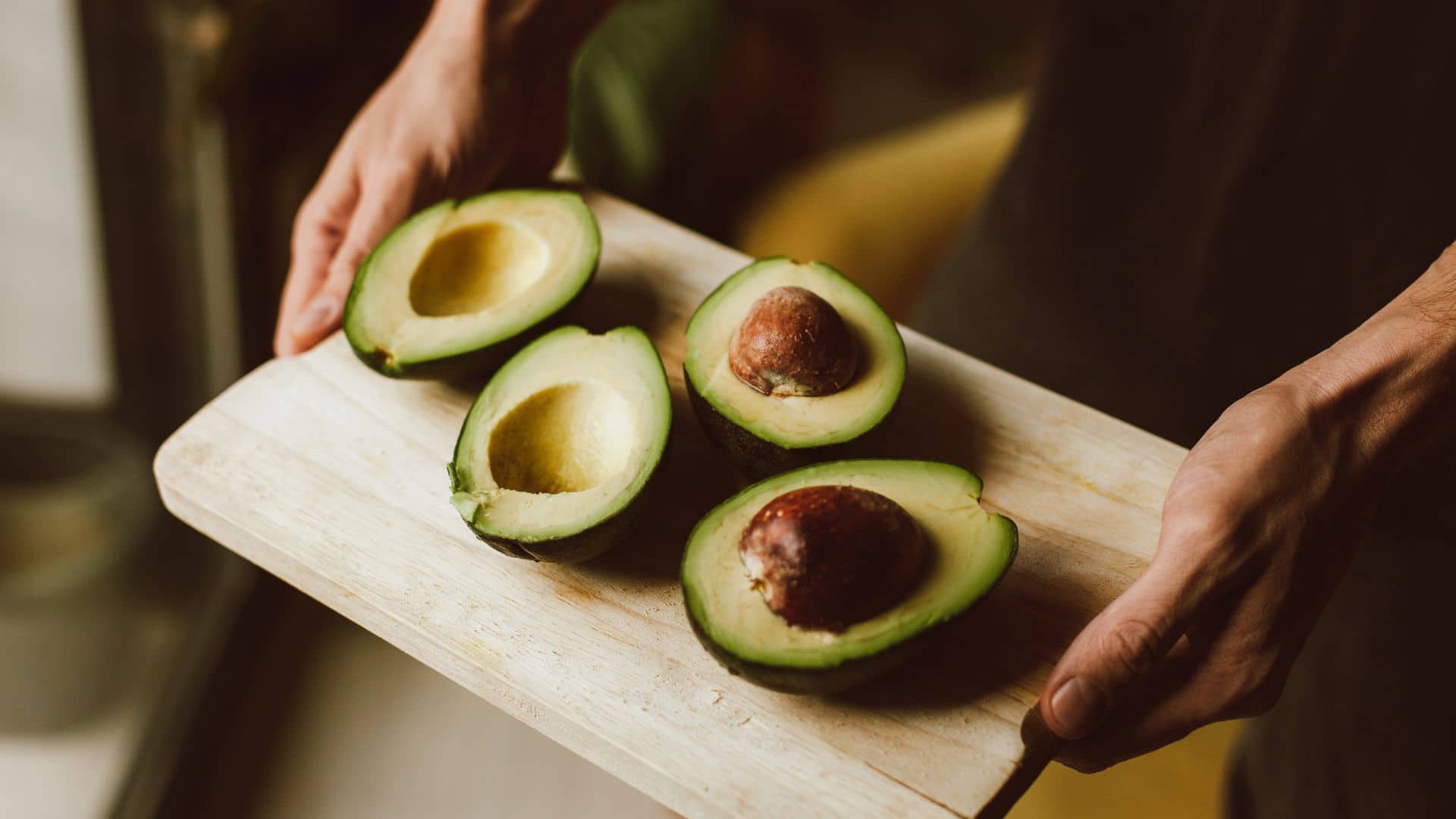If you’ve been on a quest for a toned glute while squatting, chances are you’ve come across various claims about the benefits of different foods.
One such food that often gets mentioned is the versatile avocado. Known for its creamy texture and numerous health benefits, avocados have gained popularity in recent years.
But the burning question remains: Will eating avocados give you a toned glute while squatting? In this article, we’ll delve into the potential impact of avocados on your glute gains and explore whether they truly hold the key to achieving that coveted toned derrière.
Eating avocados alone won’t give you a toned glute while squatting. Achieving this requires proper nutrition, consistent exercise, and rest. A balanced diet with enough protein, healthy fats, and complex carbohydrates supports muscle growth. Squats and other lower body exercises help tone and build glute muscles. Proper form, gradual increase in weight and intensity are crucial to avoid injury. Avocados can contribute to a healthy diet, but a comprehensive approach is necessary for fitness goals.
Avocado alone is unlikely to give you a toned glute.
Avocados are indeed a nutritious food that provides various health benefits, including promoting muscle growth and repair.
They contain healthy fats, fiber, vitamins, and minerals that can support overall health and fitness. However, eating avocados alone is unlikely to give you a toned glute while squatting.
To achieve a toned glute while squatting, you need to consider several factors. Firstly, you need to ensure proper nutrition that includes a balance of macronutrients, such as protein, healthy fats, and complex carbohydrates.
Protein is essential for muscle growth and repair, while healthy fats provide energy and support hormone production. Complex carbohydrates provide fuel for your workouts.
Consistent exercise is also crucial for building and toning the glute muscles. Squats are an effective lower body exercise that targets the glutes, quads, and hamstrings.
However, it’s important to perform squats with proper form and gradually increase the weight and intensity to avoid injury and maximize results.
In addition to squats, you can also incorporate other lower body exercises, such as lunges and deadlifts, into your fitness routine.
Adequate rest and recovery are also important for muscle growth and repair. Your muscles need time to recover after a workout, so it’s essential to get enough rest and sleep to allow your body to heal and rebuild.
You can also incorporate recovery strategies, such as foam rolling and stretching, to help reduce muscle soreness and improve mobility.
While avocados are a nutritious food that can support muscle growth and repair, they alone are not enough to give you a toned glute while squatting.
Achieving a toned glute while squatting requires a comprehensive approach that includes proper nutrition, consistent exercise, and adequate rest and recovery.
here is a table that outlines the importance of proper nutrition that includes a balance of macronutrients and what to consider:
| Macronutrient | Importance | What to Consider |
|---|---|---|
| Protein | Essential for muscle growth and repair | Aim for 1.2-2.0 grams per kilogram of body weight per day. Good sources include lean meats, fish, eggs, dairy, beans, and tofu. |
| Healthy fats | Provide energy and support hormone production | Choose unsaturated fats, such as those found in avocados, nuts, seeds, and fatty fish. Limit saturated and trans fats. |
| Complex carbohydrates | Provide fuel for workouts | Choose whole grains, fruits, vegetables, and legumes. Avoid refined carbohydrates and added sugars. |
It’s important to note that individual macronutrient needs may vary based on factors such as age, gender, weight, and activity level. Consulting a registered dietitian can help determine personalized nutrition needs.

Perform squats with proper form.
Incorporating squats and other lower body exercises into your fitness routine can help build and tone the glute muscles.
Squats are a compound exercise that targets multiple muscle groups, including the glutes, quads, and hamstrings.
By incorporating squats into your workout routine, you can effectively strengthen and tone your glute muscles.
However, it’s essential to perform squats and other lower body exercises with proper form and technique to avoid injury and maximize results.
Proper form includes keeping your feet shoulder-width apart, engaging your core, and keeping your knees in line with your toes. It’s also important to gradually increase the weight and intensity of your exercises to challenge your muscles and stimulate growth.
While avocados can contribute to a healthy diet that supports muscle growth and recovery, they alone are not enough to give you a toned glute while squatting.
A comprehensive approach that includes proper nutrition, consistent exercise, and adequate rest and recovery is necessary to achieve your fitness goals.
here’s a table that summarizes the importance of proper squat form, how to do it, and an example:
| Importance | How to Do It | Example |
|---|---|---|
| Prevents injury | Keep feet shoulder-width apart, engage core, and keep knees in line with toes | When squatting, keep your feet hip-width apart, engage your core by pulling your belly button towards your spine, and push your hips back as you bend your knees and lower down into a squat. Make sure your knees are in line with your toes and your weight is evenly distributed on both feet. |
| Maximizes results | Gradually increase weight and intensity | Begin with bodyweight squats and gradually add weight as you become more comfortable and confident. Increase the intensity by adding variations such as jump squats, sumo squats, or Bulgarian split squats. |
| Targets multiple muscle groups | Engage glutes, quads, and hamstrings | Focus on driving through your heels as you push back up to engage your glutes. Keep your core engaged throughout the exercise to help stabilize your body and engage your quads and hamstrings. |
Proper squat form is essential for preventing injury and maximizing results. Gradually increasing weight and intensity can help challenge your muscles and stimulate growth. Squats target multiple muscle groups, including the glutes, quads, and hamstrings, and engaging these muscles properly can help tone and strengthen them.
Consume a balanced diet.
In addition to incorporating squats and other lower body exercises into your workout routine, it’s important to consume a balanced diet that includes sufficient protein, healthy fats, and complex carbohydrates.
Protein is essential for muscle growth and repair, while healthy fats and complex carbohydrates provide energy and support overall health and fitness.
Adequate rest and recovery are also crucial for muscle growth and repair. Your muscles need time to recover after a workout, so it’s essential to get enough rest and sleep to allow your body to heal and rebuild.
Incorporating recovery strategies, such as foam rolling and stretching, can also help reduce muscle soreness and improve mobility.
In conclusion, while incorporating squats and other lower body exercises into your fitness routine can help build and tone the glute muscles, it’s essential to perform the exercises with proper form and gradually increase the weight and intensity to avoid injury and maximize results.
A comprehensive approach that includes proper nutrition, consistent exercise, and adequate rest and recovery is necessary to achieve your fitness goals.
Here’s a table that summarizes the importance of a balanced diet, the amount needed, what to consider, and examples of foods that provide these nutrients:
| Nutrient | Importance | Amount Needed | What to Consider | Examples of Foods |
|---|---|---|---|---|
| Protein | Essential for muscle growth and repair | 0.8-1 gram per pound of body weight | Choose lean protein sources such as chicken, fish, tofu, and beans | Chicken breast, salmon, Greek yogurt, lentils |
| Healthy Fats | Provides energy and supports hormone production | 20-35% of daily caloric intake | Choose sources of unsaturated fats such as avocados, nuts, seeds, and olive oil | Avocado, almonds, chia seeds, olive oil |
| Complex Carbohydrates | Provides fuel for workouts | 45-65% of daily caloric intake | Choose whole grains and fruits and vegetables for fiber and nutrients | Brown rice, sweet potato, quinoa, berries, spinach |
Consuming a balanced diet that includes sufficient protein, healthy fats, and complex carbohydrates is important for supporting overall health and fitness, as well as muscle growth and repair.
The amount needed varies depending on individual factors such as body weight and activity level.
When choosing protein sources, it’s important to choose lean options to avoid excess saturated fat and calories. Healthy fats should come from sources of unsaturated fats, such as avocados, nuts, and seeds, to support hormone production and energy.
Complex carbohydrates should come from whole grains and fruits and vegetables to provide fiber and nutrients.
Examples of foods that provide these nutrients include chicken breast, salmon, Greek yogurt, avocado, almonds, chia seeds, brown rice, sweet potato, quinoa, berries, and spinach.
here is a tabular breakdown of the key factors involved in achieving a toned glute while squatting:
| Factors | Importance |
|---|---|
| Proper nutrition | Essential |
| Consistent exercise | Essential |
| Adequate rest and recovery | Essential |
| Squats and other lower body exercises | Important |
| Proper form and technique during exercise | Important |
| Gradually increasing weight and intensity | Important |
| Balanced diet with sufficient protein, healthy fats, and complex carbohydrates | Important |
| Foam rolling and stretching | Helpful in recovery |
Remember that all of these factors are interconnected and contribute to overall health and fitness, and that a comprehensive approach is necessary to achieve your fitness goals.
Conclusion.
In conclusion, while avocados are a nutritious food that can contribute to a healthy diet, they alone are not enough to give you a toned glute while squatting.
Achieving a toned glute while squatting requires a comprehensive approach that includes proper nutrition, consistent exercise, and adequate rest and recovery.
Incorporating squats and other lower body exercises into your fitness routine can help build and tone the glute muscles, but it’s important to perform the exercises with proper form and gradually increase the weight and intensity to avoid injury and maximize results.
Consuming a balanced diet that includes sufficient protein, healthy fats, and complex carbohydrates is crucial for muscle growth and recovery, while adequate rest and recovery are necessary for muscle repair.
By following a comprehensive approach that includes proper nutrition, consistent exercise, and adequate rest and recovery, you can achieve your fitness goals and attain a toned glute while squatting.

Hey there, it’s Mike Rrsq, the Editor-in-Chief over at Jsquat.com, and I’m absolutely obsessed with all things squat fitness! I’ve been lucky enough to get some serious recognition for my work in this field. With a solid background in the fitness and wellness industry, I’ve been there right from the get-go, helping shape this website into what it is today.
You see, I’m not just the boss around here; I’m also a passionate contributor. I love sharing my insights through my articles, and trust me, they’re not your run-of-the-mill stuff. Each piece I write is a labor of love, filled with my expertise and real-world experience in the fitness universe. So, if you’re into fitness and looking for some inspiration, you’re in the right place!


